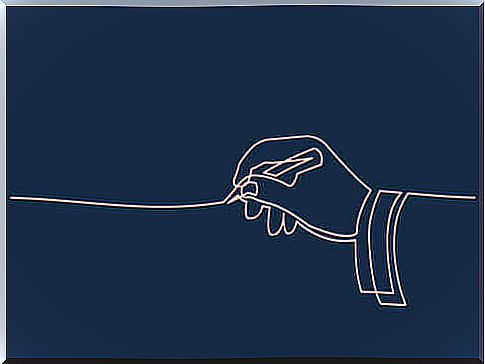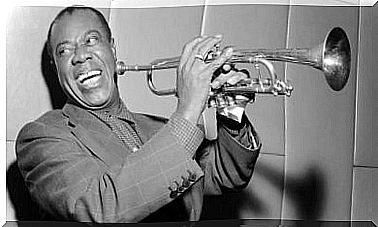The Lifeline, A Technique To Know Yourself Better

Psychology uses a lot of tools during the therapeutic process. One of the techniques used to gain self-knowledge and self-understanding is the lifeline.
Despite being a technique with a humanistic and systemic perspective, psychologists and psychologists from different schools also use it because it offers a lot of patient/client information.
We, the people, are a history, a present and a future, and everything comes together in our individuality . We are also an account of everything that happened in our life history, and knowing how to organize this and give it meaning is essential to grow as a person, have confidence in ourselves, and accept ourselves without complexes.
Because of all that, the purpose of this article is for you to understand how the lifeline technique works and to know when it’s good to use it.
How does the lifeline technique work?
The basic functioning of this technique is analysis and reflection, that is, it is not a technique that, simply by being applied, gives immediate results. For it to have an effect, an analytical and reflective effort is required.
Thus, in the first place, the fact of analyzing every part of our life story (lifeline) allows us to channel and control the different emotions associated: the same ones with which we often live, but which we do not control from conscious way.
Once the line is drawn, we must delve into the meaning of each element we draw on it. The lifeline technique requires a reflective analysis, which is often guided by questions such as: what has changed in me as a result of this experience? What did I lose and what did I gain in that moment? Is this experience outdated ? Among other things.
With all of this, we are able to elaborate the experiences in a healthy and adaptive way, and in this way, know ourselves and understand ourselves better, because we are able to constructively unite our past with the present.

The best times to use this technique
The lifeline can be used at (almost) any time, but it is ideal at the beginning of a therapeutic process or to end a confusing stage. The lifeline is a very useful technique whenever you want to get to know yourself better, because by understanding everything you’ve lived through, you’ll understand why you act the way you act and feel what you feel.
On the other hand, it is not advisable to apply the lifeline technique if you have had painful and traumatic experiences recently. This is because, according to a study carried out by the University of Arizona (USA), within a period of mourning (or reaction to a loss) we can observe phases of depression. That is, while one is experiencing a period of loss or trauma, this technique is not indicated because it is likely that mood introduces a negative bias into the analysis.
The steps for its realization
To apply this technique, as mentioned above, you must focus on two phases of work: the elaboration of the lifeline and the critical-reflective analysis phase. So, first of all, you just need paper and pencil, draw a straight line and start putting the following points on it in chronological order:
1. Define and write down your life events, such as your birth, the birth of your siblings, cousins or children, the death of loved ones, the beginning of life as a couple or marriage, etc. For this part, you can use blue color.
2. Also highlight significant events or very important moments in your life that represented a change. For example: a change of house, the beginning or end of a period of study, a much desired or important trip, among others. You are the one who will identify what is important. For these line events you can use green color.

3. Now you need to mark your inflection points on the line. We understand that they function as keys to opening phases or crisis situations that are assumed and elaborated in an appropriate way. That way, you can use the color red for these moments of inflection, and you should specifically mark those that you feel made you stronger.
4. Lastly, you should indicate “cut” situations or moments. We refer to situations that marked a before and an after in your life, which you feel are the moments of rupture from what was your life and your routine. Also, they are difficult to remember or are very traumatizing. For these events, you can use black or some dark color that contrasts with the rest of the notes.
Once you have drawn the lifeline, you should take the time to analyze the impact of each of the events you have marked in your life. It is important that you go beyond what is drawn on the line and go deeper into its consequences. Remember: knowing yourself is a necessary step in developing and overcoming personal limits.









